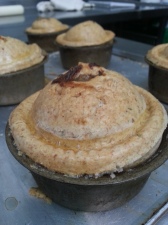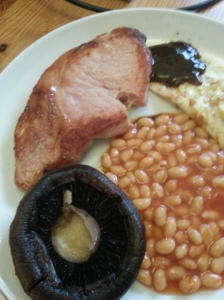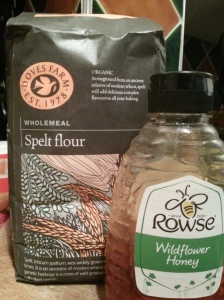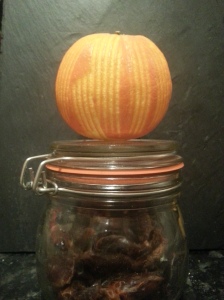The joy of passion is being able to share it with others. A recent collaboration with Darren Wiseman and his team at The York Pie Company has finally reached its conclusion. The Viking Pie lives!
When I heard that Darren wanted to add a Viking Pie to his repertoire it seemed a perfect opportunity for The History Girls to share their knowledge. The chance to see a product reproduced in a commercial context was too good to miss. Evidence from archaeological finds here in York, an understanding of the meat, foraged goods and farming methods utilised by Vikings here in York in the 9th/10th centuries all influenced the recipe developed for this exciting project.The pie can be purchased from The York Pie Company and will have its first outing with the public at our upcoming tasting event, Taste Yorvik. (Tickets still available.)
As pastry was yet to be invented in Viking era York, it is true to say that this is a pie influenced by 10th century flavours as opposed to an actual Viking pie. The first step in developing a filling must surely be the choice of meat and we felt that options such as venison and wild boar were rather cliché. The most commonly farmed animal was the pig – as through much of history – followed by sheep which were valued for their wool. Once an animal outlived its usefulness, or became difficult to feed due to times of hardship, then it would be slaughtered.
There was the decision of flavourings. Archaeological evidence shows that Vikings in York ate both coriander and dill, perfect companions to mutton. This provided us with sound building blocks to a recipe. To supplement the mutton we investigated vegetable sources. The Vikings are thought to have consumed wild leeks picked on foraging trips, and were known to grow peas and broad beans. As both peas and leeks are an excellent match to dill they were added to list. To complete the aim for authenticity, and round off the flavour profile, we also included a combination of rye and barley flour in the pastry mix – common grains for the period.
So if you are in York and fancy a Viking influenced pie, keep an eye out for The York Pie Company. Or if you are a business and wish to collaborate with The History Girls on a similar project do give us a shout, we can help you put a little bit of history on your plate.







